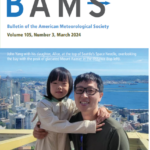Task 237
Data Assimilation of AMSR-E Soil Moisture Retrievals and Analysis of Soil Moisture Spatial Variability
Principal Investigator(s):
B. Li
Sponsor(s):
D. Toll
Last Updated:
October 26, 2012 15:26:03
Description of Problem
Recent studies on the assimilation of Advanced Microwave Scanning Radiometer (AMSR-E) derived soil moisture retrievals focus on extracting anomaly signals embedded in the sensor data to improve the anomaly detection of land surface models. Utilizing only anomaly information does not address the issue of model bias, an issue which poses a challenge for most assimilation methods. Models are often biased due to uncertainties in the input parameters and deficiencies in model physics. In particular, the bias in the simulated soil moisture fields has a substantial impact on the estimation of land surface processes such as evapotranspiration (ET) and runoff since they are calculated based on the absolute value of soil moisture.
In contrast to anomaly information, the actual value of AMSR-E retrievals represents the spatial mean, and can be used to reduce model bias. Recognizing the need and the potential, an ensemble Kalman filter with a mass conservation constraint was developed to assimilate the actual value of AMSR-E retrievals without any scaling or preprocessing. This scheme uses different updating equations for the upper and lower two layers so that the bias in the upper two layers can be reduced using a conventional updating scheme while the lower two layers are updated through an equation conserving the mass within each soil column.
Scientific Objectives and Approach
Use multi-model ensemble to quantify the uncertainty associated with model physics and soil moisture state; in addition, assimilate NASA AMSR-E soil moisture retrievals to improve modeled soil moisture state and examine the impact of the assimilation on stream flow prediction.
Accomplishments
Results using the Noah land surface model in the Little Washita watershed of Oklahoma show that the mass conservation scheme reduced the bias of estimated soil moisture fields in the entire soil profile and provide consistent flux estimates. The complete conventional updating scheme improved the bias near the surface layers but severely degraded the soil moisture estimates in the deeper profile, in addition to generating physically inconsistent base flow and loss of mass conservation. Figure 1 shows the comparison of simulated soil moisture at different depths from the control, data assimilation using the conventional updating scheme (DA) and data assimilation using the mass conservation updating scheme (DA MassCon).
Characterizing the spatial variability of soil moisture is important for modeling land surface processes due to their non-linear relationship with soil moisture. Numerical experiments have shown that loss of spatial variability can lead to degraded estimates of latent heat. Statistical distribution of soil moisture is also critical for designing validating networks for satellite missions. One of the key questions for designing ground validations networks is how many sampling locations are needed in order to capture the spatial mean value which is what measured by satellites. Failing to capture the spatial variability of soil moisture would lead to incorrect validation results.
Previous studies on soil moisture spatial variability have relied on data obtained from field campaigns which cover smaller spatial domains and lasted only a few weeks to 2 months. Seemingly conflicting conclusions have been reached regarding the relationship between soil moisture spatial variability and mean soil moisture values: some found spatial variability increases with increasing mean soil moisture and others found just the opposite.
In this study spatial statistics of in situ soil moisture measurements from the Soil Climate Analysis Network (SCAN), covering the continental US and over a 200-day period, were examined over three regions with different climates. The experimental design provides a full range of mean soil moisture values and, for the first time, allows for the revelation of climate dependent statistical features of soil moisture. It was found that the climate specific statistics are actually initiated by the boundedness of soil moisture which suppresses the spatial variability at zero and saturation. As shown in Figure 2, spatial variability decreases as the mean soil moisture approaches zero and saturation (about 0.45) and peaks at the mid-range of soil moisture, 0.2. Statistics of modeled soil moisture estimates, on the other hand, show less dependency on climate conditions due to the fact that the model relaxes to its preferred dynamic ranges which do not match those of in situ measurements. The key conclusion of this study is that in order to estimate the distributions of soil moisture within a given area, one must know the dynamic range of soil moisture because the spatial statistics of soil moisture depends on the mean soil moisture values. In addition, models need to capture the correct mean soil moisture ranges in order to correctly represent soil moisture spatial variability.
Two journal articles have been submitted based on these two studies and one presentation was given at American Geophysical Union Western Pacific Meeting held at Taipei, June 2010.
Task Figures
| Fig. 1 – Comparison of soil moisture estimates from Control, DA and DA MassCon with in situ measurements at different depths. |






